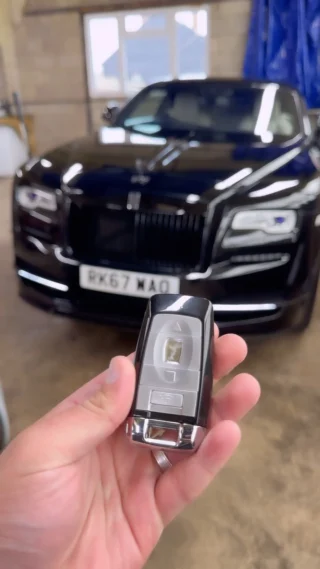Car Key Case Repair: A Comprehensive Guide
The functionality and benefit of car keys have developed significantly with advancements in innovation. As lorries have actually transitioned from standard metal keys to advanced key fobs and smart keys, the significance of maintaining these important elements has actually become vital. One element that often requires attention is the repair of car key cases. This post looks into the complexities of car key case repair, dealing with common issues, efficient repair approaches, and practical ideas for maintaining key durability.
Understanding Car Key Cases
Car key cases are the protective real estates for the electronic elements and battery of car keys. They are designed to secure the internal systems from wear and tear due to everyday usage. However, over keyless remote repair and with frequent handling, these cases can become scratched, split, or broken, compromising not only the visual appeal but possibly the functionality of the key itself.
Typical Issues with Car Key Cases
- Cracks and Breaks: The most common issue occurs from unexpected drops or pressure applied to the key.
- Run-down Buttons: Frequent usage can cause the wearing down of buttons, making it hard to lock or unlock doors.
- Battery Compartment Damage: If not handled correctly, the compartment that houses the battery can end up being loose or misaligned.
- Water Damage: Accidental exposure to water or humidity can harm the electronic elements within the key case.
- Cosmetic Damage: Scratches and damages can decrease the general aesthetic of the key case.
| Issue Type | Description | Effect on Functionality |
|---|---|---|
| Fractures and Breaks | Physical damage from drops or pressure | May render the key unusable |
| Run-down Buttons | Buttons become unresponsive or need more force | Trouble in operation |
| Battery Compartment Damage | Loose or misaligned compartment affecting battery access | Key may not function at all |
| Water Damage | Direct exposure to moisture destructive internal electronic devices | Malfunction or brief circuit |
| Cosmetic Damage | Scratches and aesthetic wear | No practical impact, but lowers appeal |
Techniques for Repairing Car Key Cases
Fixing a car key case can range from DIY solutions to professional services. Here are a number of methods to consider when confronted with a damaged key case:
DIY Repair Techniques
- Super Glue for Cracks: For small fractures in plastic key fobs, a premium extremely glue can successfully bond the split back together.
- Epoxy for Breaks: For more significant breaks, a two-part epoxy is suggested, offering a more powerful hold after curing.
- Changing Buttons: If buttons are worn, they can sometimes be changed utilizing button packages readily available online. Alternatively, you can utilize silicone sealant to develop brand-new buttons.
- Cleaning and Drying: In the occasion of water exposure, quickly disassembling the key fob, air-drying the components, and using rubbing alcohol to clean up may restore the electronics.
- Protective Covers: To prevent recurring damage, consider investing in a protective silicone case that fits over the key.
Professional Repair Options
When the DIY technique is not ideal or the damage is comprehensive, it may be a good idea to speak with a professional locksmith or car dealer. Expert services can offer:
- Reprogramming: If electronic parts are harmed, reprogramming services can bring back lost functionality.
- Key Replacement: In cases beyond repair, a complete key replacement may be needed, which typically consists of reprogramming the new key to deal with the vehicle.
- Shell Replacement: Professionals can change the external shell of the key fob while transferring the internal mechanisms firmly.
Preventative Measures for Key Longevity
To lengthen the life-span of car key cases and prevent typical damages, consider the following ideas:
- Avoid Exposing to Moisture: Store keys in a dry environment and prevent leaving them in damp pockets or places.
- Utilize a Keychain: Attaching your car key to a large keychain can assist avoid drops and make it easier to locate.
- Minimize Pressure: Be conscious of how much pressure is used to key fobs during use; prevent sitting on keys or placing heavy products on top of them.
- Regular Cleaning: Regularly tidy the key fob and get rid of debris to avoid buildup that might damage buttons and produce extra wear.
Frequently Asked Questions about Car Key Case Repair
Q1: Can I fix a broken key fob myself?
A: Yes, many individuals can fix minor damages such as fractures and button replacement utilizing very glue or epoxy. However, complex electrical problems may need expert support.
Q2: How do I know if my key fob requires to be changed?
A: If the key fob is significantly unresponsive, the battery is regularly passing away despite replacements, or if it is physically harmed beyond repair, it may require to be changed.
Q3: What if water enters my key fob?
A: Immediately dismantle the key, dry it thoroughly, and tidy any elements exposed to moisture. If problems continue, consult a professional.
Q4: How can I avoid damage to my car key?
A: Use a protective case, prevent exposure to moisture, and store it safely when not in use.
Q5: Are there particular tools I require for DIY repairs?
A: Basic tools such as very glue, epoxy, a small screwdriver set, and silicone sealant are often enough for DIY repairs.
Car key case repair is a vital skill for any vehicle owner seeking to preserve their keys' performance and appearance. By comprehending common concerns, using reliable repair methods, and carrying out preventative measures, drivers can guarantee their car keys stay in optimum condition for several years to come. Whether selecting a DIY approach or looking for expert assistance, taking the required steps can substantially extend the life of car keys and keep them operating efficiently.

